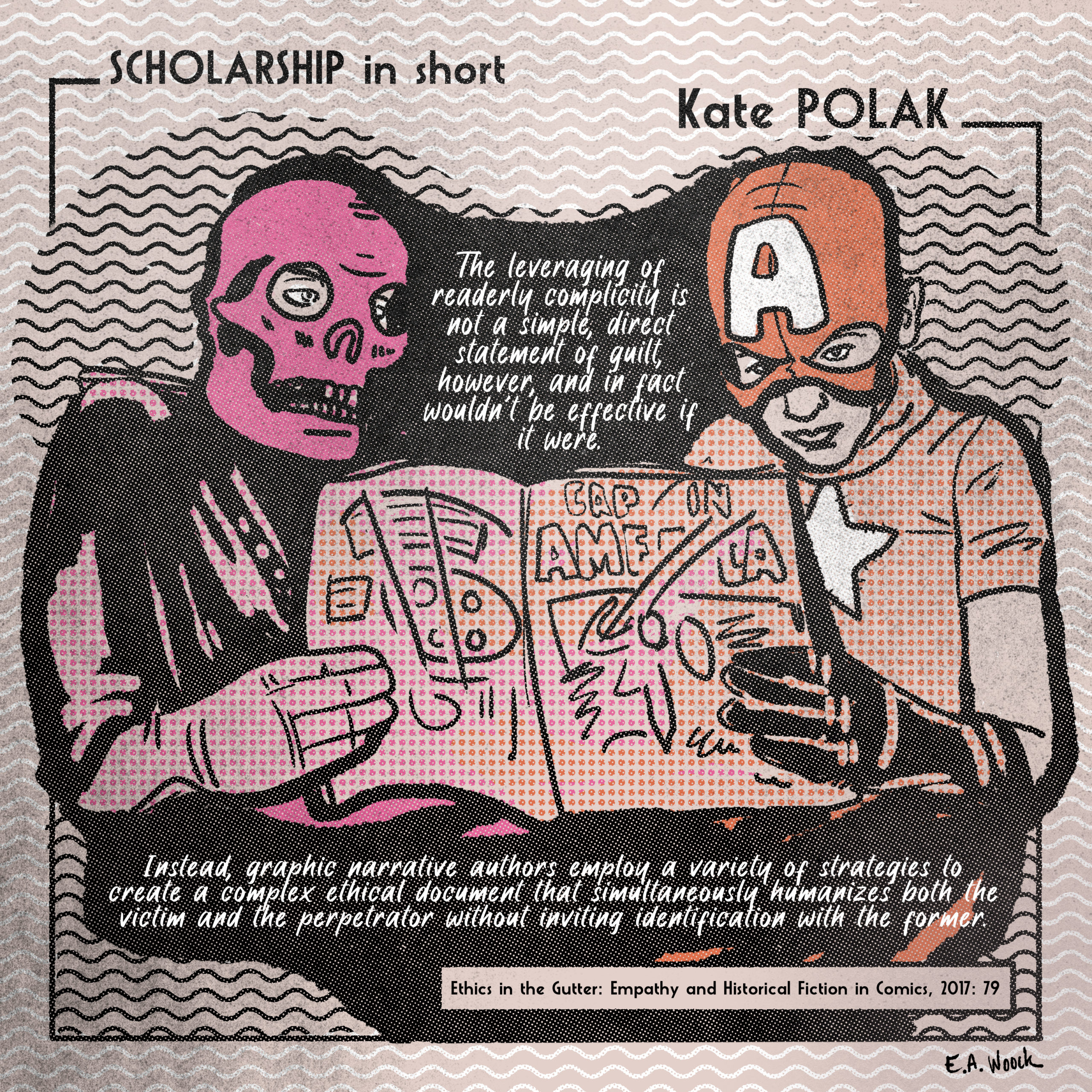
About the scholar
Dr. Kate Polak is a writer, artist, performer, and scholar specializing in comics, poetry, 21st century women writers, and the literatures of genocide. She is an Instructor and research associate in the English Department at Florida Atlantic University, where she teaches writing and literature, focusing on poetry, the representation of violence, and graphic narrative. Her book, Ethics in the Gutter: Empathy and Historical Fiction in Comics, was nominated for an Eisner Award.
About the book
The book investigates the intersection of ethics and empathy in graphic narratives from autographics to historigraphic metafiction, through the following framing questions. First, how do writers and artists use the form of graphic narratives to critique the ethical dimension of reader’s empathetic engagement with characters set in a historical event? Second, how are readers’ affective engagements with graphic narratives complicated by focalization and point of view? Third, how does the depiction or implication of violence in visual form complicate the reader’s ethical relationship to focalizing characters? Fourth, what can fictional graphic narratives offer in discussions about affect and ethical engagement with texts that deal with real-world violence? Finally, she seeks to explore how fictional graphic narratives that depict historical realities engage the reader differently than the well-researched genre of autographics. This book’s most important questions surround how we receive and interpret representations of history, considering the ways in which what we think we know about historical atrocities can be at odds with the convoluted circumstances surrounding violence. Beginning with a new look at Watchmen, and including examinations of such popular series as Scalped and Hellblazer as well as Bayou and Deogratias, the book questions how graphic narratives create an alternative route by which to understand large-scale violence. Ethics in the Gutter explores how graphic narrative representations of violence can teach readers about the possibilities and limitations of empathy and ethics.
Kate Polak argues that “In terms of representation, that when we view an image, the scenery and character interactions within the panel define the parameters whereby we imaginatively enter the world of the comic. That “readers of comics, too, experience bodily echoes of the motions and actions they observe” means that there are several levels by which readers perceptually connect with the comics page, including traditional physical levels (like turning or scrolling), physical-mental levels (embodied simulation and attention to point of view), as well as the imaginative levels in which readers fill in connections. This has repercussions for how we understand our emotional engagement with characters as well as how we understand the function of representation along the visual-verbal planes of comics.” (P 7)
